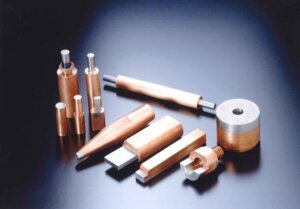Did you know? Metal tubes help put the “air” in airbags!
Of all the systems within an automobile that utilize metals parts, perhaps the most important are the various automotive safety systems. In addition to the basic vehicle features — from the mirrors, headlights, reflectors, and turn signals to the braking, steering, and suspension systems — automotive safety systems now include a more extensive menu of active capabilities designed to help drivers detect obstacles, control the vehicle, and avoid crashes. For example, there are systems designed to help detect driver fatigue, alert drivers to objects in their path, maintain safe distance from other vehicles, and maximize vision beyond headlight range and around curves in the road.
Yet, automobile safety still depends on some very basic “passive” components — such as seat belts, reinforced passenger compartments, and crumple zones designed to absorb and dissipate force — to help protect occupants in the event of a collision. Another addition to the list of passive automotive safety systems is the airbag, which by the end of the twentieth century became a requirement in all cars, light trucks, and vans. And perhaps surprisingly, precision metal tubing plays an important role in this technology.
How do airbag systems work?
The airbag traces its origin to air-filled bladders described as early as 1941 and first patented in the 1950s. (Read more about airbag history.) Designed to work in tandem with seat belts, the airbag is simple in concept: it’s an inflatable cushion designed to help protect automobile occupants from serious injury in a collision. And according to the National Highway Traffic Safety Administration, airbags have saved nearly 28,000 lives since 1998; the NHTSA calculates that using a seat belt and having an airbag reduces the risk of death by 61 percent.
The typical airbag system consists of a module containing the inflatable nylon airbag itself and an inflater canister, which incorporates an electronic initiator that ignites a solid propellant and turns it into harmless nitrogen gas for inflating the airbag. These automotive safety systems also include crash sensors, a diagnostic monitoring unit, a connecting coil, and an indicator lamp. All of the components are interconnected by a wiring harness and powered by the vehicle’s battery.
As soon as a collision begins, the crash sensors detect sudden deceleration and, if the crash is severe enough, send an electric spark to the inflater canister, setting off a chemical reaction that produces the nitrogen gas, which expands to deploy and inflate the airbag in less than one-twentieth of a second. The airbag is fully inflated for only one-tenth of a second and is nearly deflated by three-tenths of a second after impact.
What is the role of metal tubes in these automotive safety systems?
Metal tubes of different sizes are used in airbags systems. For example, large metal tubing with an OD of 25-65 mm and perforations is used for the inflater canisters that hold the propellant. However, we are more interested in the very small tubing that plays a central role in the sensors used in airbag systems.
The crash sensors that tell an airbag when to deploy are perhaps the most important part of these automotive safety systems. After all, you want to be sure an airbag will deploy when it is supposed to; likewise, you don’t want it to inflate accidentally due to environmental conditions.
One crash sensor commonly utilized for these automotive safety systems is the electromechanical “gas dampened ball and tube” design. Here, the sensor is made up of a small steel ball held on one end of a metal tube by a magnet; on the other end of the tube are two open contacts (a switch). When a crash of sufficient force occurs, it jolts the steel ball loose from the magnet. The ball rolls down the metal tube to the end and closes the circuit — setting airbag deployment into action in a millisecond.
Today’s crash sensors are calibrated to prevent the airbag from inflating when the car goes over a bump or pothole, or in the case of a minor collision. Part of calibrating these automotive safety systems correctly is ensuring that the parts of the sensor — including the tubes — are as precise as possible. The metal tubes used in the crash sensors must meet dimensional and functional requirements, with clean cuts and very close tolerances for thickness and eccentricity. The metal tube must also be able to maintain its characteristics and withstand harsh environmental conditions.
There are other types of crash sensors, and many newer vehicles have solid-state crash sensors that produce an electronic signal when jolted. Automakers are also developing adaptive airbag systems that can vary their deployment speed and force depending on occupant size, seating position, and impact speed.
As these technologies and other automotive safety systems advance, Metal Cutting will continue to be here to meet the needs of the automotive industry. As a precision metal fabricating company, we are experts in very tight tolerance cutting, grinding, lapping, and polishing of all metals for automotive safety systems, as well as for fuel injection systems and lighting systems. We also provide secondary operations such as bending, angle cutting, and pointing and slotting of small diameter tubes, wires, and rods. In addition, tungsten and molybdenum products, such as wire, ribbon and rod, are available.
For tips on how to choose the right vendor for your metal parts needs, please download our free guide, 7 Secrets to Choosing a New Contract Partner: Technical Guide to Outsourcing Your Precision Metal Fabrication.





